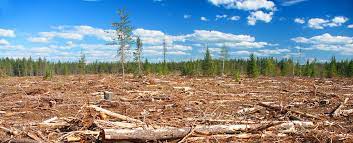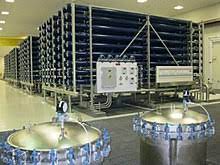The 4 Main Reasons for Conservation and Causes of Conservation Conflicts
The challenge of conservation is to understand the complex connections among natural resources and balance resource use with protection to ensure an adequate supply for future generations.
1. To Reduce Natural-Resource Consumption
Consumption of natural resources rises dramatically every year as the human population increases and standards of living rise. From 1950 to 2000 the world population more than doubled to 6 billion people, with nearly 80 percent living in developing, or poorer, nations.
The large, developed nations, however, are responsible for the greatest consumption of natural resources because of their high standards of living. For instance, the average American consumes as much energy as 27 Filipinos or 370 Ethiopians.
Conservation education and the thoughtful use of resources are necessary in the developed countries to reduce natural-resource consumption. For example, reducing the high demand for tropical hardwoods such as teak and mahogany in the United States and Japan would slow the rate of tropical forest destruction.
2. To Protect Natural Resources from Pollution
Conservation of Natural Resources is done in order to protect natural resources from pollution. Here, all the stake holders involved (Individuals, industries, and governments) have many obligations.
These include prohibiting or limiting the use of pesticides and other toxic chemicals, limiting wastewater and airborne pollutants, preventing the production of radioactive materials, and regulating drilling and transportation of petroleum products.
Failure to do so results in some countries have been implicated for contaminated air, soil, rivers, plants, and animals.
For example, if governments required that all oil tankers be fitted with double-layered hulls, the damages to fisheries and wildlife from the many oil spills of the 20th century may have been reduced.
3. To Reduce Waste
In many cases it is possible to reuse or recycle resources to reduce waste and resource consumption and conserve the energy needed to produce consumer products.
For example, paper, glass, freon (a refrigerant gas), aluminum, metal scrap, and motor oil can all be recycled.
A preventative measure called recycling, a general term for designing more durable, recyclable products such as reusable packaging, encourages reuse.
4. To Prevent Valuable Resource from Misuse
Some resources are so unique or valuable that they are protected from activities that would destroy or degrade them. For example, protecting national parks and wilderness areas from logging or mining because such activities would reduce the economic, recreational, and aesthetic values of the resource.

Forests and wetlands (areas with high soil moisture or surface water) may be protected from development because they enhance air and water quality and provide habitat for a wide variety of plants and animals.
Read Also : The Application of Biotechnology to Waste Management
Unfortunately, these areas are often threatened with development because it is difficult to measure the economic benefits of cleaner air, cleaner water, and the many other environmental benefits of these ecosystems (the plants and animals of a natural community and their physical environment).
Causes of Conservation Conflicts
Conservation conflicts arise when natural-resource shortages develop in the face of steadily increasing demands from a growing human population. Controversy frequently surrounds how a resource should be used, or allocated, and for whom.
For example, a river may supply water for agricultural irrigation, habitat for fish, and water-generated electricity for a factory.
Farmers, fishers, and industry leaders vie for unrestricted access to this river, but such freedom could destroy the resource, and conservation methods are necessary to protect the river for future use.
Conflicts worsen when a natural resource crosses political boundaries. For example, the headwaters, or source, of a major river may be located in a different country than the country through which the river flows.
There is no guarantee that the river source will be protected to accommodate resource needs downstream. In addition, the way in which one natural resource is managed has a direct effect upon other natural resources.
Cutting down a forest near a river, for instance, increases erosion, the wearing away of topsoil, and can lead to flooding. Eroded soil and silt cloud the river and adversely affect many organisms such as fish and important aquatic plants that require clean, clear freshwater for survival.
In summary, natural resources are conserved for their biological, economic, and recreational values, as well as their natural beauty and importance to local cultures.
For example, tropical rain forests are protected for their important role in both global ecology and the economic livelihood of the local culture; a coral reef may be protected for its recreational value for scuba divers; and a scenic river may be protected for its natural beauty.
Conservation is sustainable use and protection of natural resources. A renewable resource is one that may be replaced over time by natural processes.
Nonrenewable resources are those in limited supply that cannot be replaced or can be replaced only over extremely long periods of time.
Preserving biodiversity is essential for ecosystems to respond flexibly to damage or change.
Humans benefit greatly from the many medicines, crops, and other products that biodiversity provides.
Forests provide many social, economic, and environmental benefits. Soil, a mixture of mineral, plant, and animal materials, is essential for most plant growth and is the basic resource for agricultural production.
Global supply of freshwater is distributed unevenly. There is a global need to increase energy conservation and the use of renewable energy resources.
Conservation education and the thoughtful use of resources is necessary in the developed countries to reduce natural-resource consumption.
Conservation of Natural Resources is done in order to protect natural resources from pollution. Some resources are so unique or valuable that they need to be protected from activities that would destroy or degrade them.
Conservation conflicts arise when natural-resource shortages develop in the face of steadily increasing demands from a growing human population.



